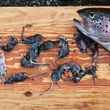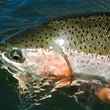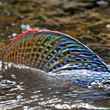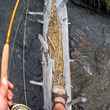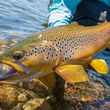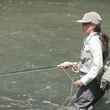There are days when the pull of the water is strong; the burden of the workaday world has tipped the balance and out of sorts I will go despite conditions, and hatches and the real possibility of catching. I go for other reasons, I tell myself, but mostly I go because I want to be shocked back to that other person by the charged particles delivered through a tense, alive line. I also go because, like most anglers, I am an optimist filled with hope.
Indiana isn't a very trouty place. That doesn't mean one can't find trout in the state, though I'm not sure you can, but it's not a destination that one would pick for an adventure if one were a trout angler. The long car drive to Indiana was for camaraderie and carp. There were likely other reasons too but those were the primary motivators that caused Jonny and I to drive thousands of miles during five days in June.
The fishing in Indiana was a bust. After a week of great company and mediocre angling we had only managed some smaller largemouth and a couple of handfuls of bluegills. Our lack of opportunity was primarily attributable to what the weather gods had delivered. The rivers throughout the region were muddy and full. The carp flats roiled, not from the fat bodies of eager fish, but wind driven flood waters. Even in the numerous lakes and ponds it appeared the fish were off of that something they were supposed to be on. Not far from downtown Indianapolis, we watched a large pod of carp feed in an unreachable eddy. In a way is was comforting to know that the fish were actually there. It was also deeply disturbing.




